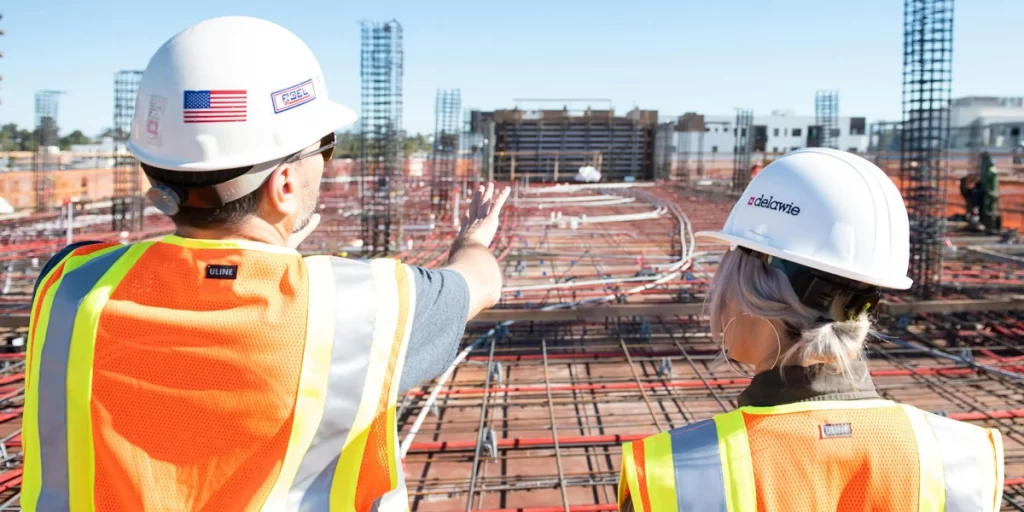Taking on a building project, whether ground-up construction or a complex renovation, is a major undertaking. Success doesn’t just come from good design or solid execution. It depends on leadership: the people managing the process day to day, from concept to completion.
When starting a project, many owners hear about two key roles: the Construction Manager (CM) and the Owner’s Project Manager (OPM). Both are critical, but they play very different parts.
Construction Manager (CM): Builder and Contractor Partner
A Construction Manager is typically brought in once a project has entered design or preconstruction. Their primary role is to plan, coordinate, and execute the physical building process. They may help price the design early, manage subcontractors, oversee site safety, and keep construction on schedule.
While a CM often collaborates with the design team during preconstruction, their contract and incentive structure are ultimately tied to the construction itself. CMs are often compensated as a percentage of the construction cost, meaning their role scales with the size and scope of what’s being built.
Owner’s Project Manager (OPM): Advocate and Oversight Partner
An Owner’s Project Manager is hired directly by the owner to represent their interests across all phases of the project, from early planning and feasibility studies through design, permitting, construction, and final turnover.
Whereas a CM focuses on how to build, an OPM focuses on why and for whom something is being built.
An OPM’s role often includes:
- Helping select and coordinate the architect, engineers, CM, and other consultants
- Managing the overall project schedule, including design, permitting, and occupancy
- Monitoring and managing the budget across all phases
- Reviewing design for constructability and alignment with the owner’s goals
- Supporting procurement decisions, from contractors to furniture and signage
- Reporting clearly and consistently to the owner or governing body
- Resolving conflicts between parties with an eye toward the owner’s best interest
Unlike a CM, the OPM’s compensation is typically a flat fee or time-based, not tied to construction volume, which positions them as a neutral, objective representative of the owner.
CM vs. OPM: Key Differences
| Aspect | Construction Manager (CM) | Owner’s Project Manager (OPM) |
|---|---|---|
| Primary Role | Execute construction | Represent owner throughout the entire project |
| Engaged | During design or construction | Ideally before design begins |
| Focus | Building the project | Delivering the owner’s goals |
| Compensation | Based on construction value | Flat fee |
| Responsibilities | Manage subcontractors, site, schedule, and cost during construction | Manage consultants, design, schedule, budget, and owner-side decisions |
It’s not uncommon to have both a CM and an OPM on the same project. In fact, that combination is often ideal. The CM brings construction expertise to the table. The OPM ensures that the work being done aligns with the owner’s objectives, budget, and timeline, across every dimension.
Why the Right OPM Makes a Difference
While the CM focuses on executing construction, the OPM acts as the owner’s strategic partner, continuously ensuring that the entire process leads to the right result.
This role has become increasingly important as projects have grown more complex, with more stakeholders, more regulatory hurdles, and tighter margins for error.
A strong OPM helps avoid costly missteps by:
- Anticipating issues before they impact construction
- Keeping all consultants aligned with owner priorities
- Providing clarity and structure to decision-making
- Maintaining visibility on both the forest and the trees
Where Nautare Comes In
Not all OPMs take the same approach. At Nautare, we’ve built our firm around the belief that project success comes from true engagement, not just coordination.
Our role isn’t limited to reporting progress or checking boxes. We provide hands-on technical oversight, take ownership of outcomes, and help clients navigate complexity with confidence. While many OPMs act as intermediaries, we act as a strategic partner, both in the boardroom and in the field.
For owners seeking proactive leadership, not just representation, Nautare offers a different level of service and accountability.
Considering a project? Let’s talk about how the right team structure, and the right OPM, can make the difference.
